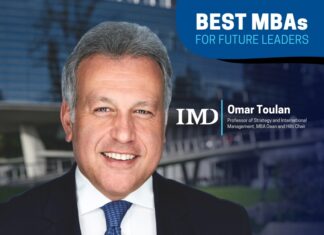Top executive education programs play a crucial role in talent development by providing a targeted and specialised learning experience for professionals at the top levels of organisations. It offers a unique opportunity for executives to enhance their skills, knowledge, and leadership capabilities in a rapidly evolving business landscape.
Executive Education as a Strategic Tool for Talent Development
Organisations use top executive education as a strategic tool for HR managers who deal with the majority of employee complaints and frequent employee departures that result in lost expertise and recruiting pressures. Organisations might utilise executive education as an incentive to keep on staff members who otherwise would have left. Even if a company cannot provide new opportunities, the assistance given to workers for their skill development may bind them to the company and enable them to contribute more to their positions.
Leadership Succession Planning
Planning for important executives’ eventual leave from leadership positions, whether by retirement, promotion, or another exit, is known as executive succession planning. Firms often do this planning regularly to reduce the danger of losing a top management official. Additionally, it is done to maintain consistency and spot rising talent for which organisations may develop, train, and even provide rotating opportunities. In brief, succession planning is all about strategically guiding leadership development and ensuring that the next generation of business leaders is prepared to take over when necessary.
Instead of creating succession plans based on present responsibilities, businesses must think about succession in the context of future leadership roles. This will guarantee that future leaders are equipped to manage a world different from the one we live in now.
Identifying High-Potential Employees
Employees with high potential will be the ones driving your company forward. They are essential. They will be the ones handling significant responsibilities, managing initiatives, and providing creative solutions that influence the direction of the business. If high-potential employees are interested in their position and see the potential to grow as specialists, they could stay with you long-term. 94% of workers say they are more inclined to remain longer if they believe their company is investing in them. These growth and development initiatives, such as high-potential employee programs, may assist your business in attracting top people.
To identify a high-potential employee, look through some of their qualities:
- Demonstrates creative thinking and initiative;
- Assist others;
- Accepts change and quickly adapts;
- Is okay with criticism and works to improve;
- Looks for new possibilities to improve oneself and one’s career;
- Has potential for leadership by moving initiatives ahead without being asked to.
Employees with high potential tend to be bright and skilled problem solvers. They don’t simply come up with answers to concerns; they also search for approaches to enhance procedures and create new approaches. For instance, whereas an intelligent individual may come up with solutions to a problem, a high-potential employee will devise plans to prevent the same problem from happening again.
High-potential workers have the motivation and ambition to take on more responsibility and strive to do their jobs well. When identifying HiPos, observe their long-term professional objectives and see their reaction. These discussions may provide insightful information about each employee’s potential and the positions they could be most suitable for.
One of the most essential characteristics of high-potential employees is emotional intelligence. That is why it is essential to see how employees interact with customers and colleagues. Are they able to maintain their self-control under pressure? Do they communicate with others with empathy? How do they respond to criticism?
Fostering a Learning Culture
Organisations used to rely on employee expertise in the past. Organisations recruited someone with the expertise if it wasn’t already present in their firm. However, considering that there is a high level of skill gaps even with people of high-level degrees while competition in the job market is growing, it is essential to focus on the strategic development of people. Organisations should develop a learning culture that enhances worker satisfaction, aids in staff retention, and allows the organisation to strategically develop skills.
To be effective, it is essential to interrelate learning with business objectives. If an employee sees that learning assists in reaching companies goals, they will be more interested in the learning process. Learning should be accessible to every employee. Learning activities must be an integral part of the work environment rather than something employees must seek out independently. You may gently remind staff about learning possibilities using integrated learning through daily feeds.
Learning should not be boring; make it fun. Although most people do not consider learning to be enjoyable, there are several things you can do to improve student engagement. You may focus on the requirements and preferences of the individual for an incredibly personalised learning path with today’s adaptive learning experiences. You can create a fun experience; gamification elements like learning points, leaderboards, confetti explosions, and diplomas will also raise learner engagement.
Conclusion
Top executive education programs play a significant role in talent development. Recently, many employers thought that it was enough to hire a person with expertise. Still, now it is evident that it is essential to invest in employees and make them interested in staying with you. Many organisations are willing to hire potential employees, but with executive education and identifying potential employee techniques, you will make your business move forward.

























![“Does Everyone Hear Me OK?”: How to Lead Virtual Teams Effectively iStock-1438575049 (1) [Converted]](https://www.europeanbusinessreview.com/wp-content/uploads/2024/11/iStock-1438575049-1-Converted-100x70.jpg)






